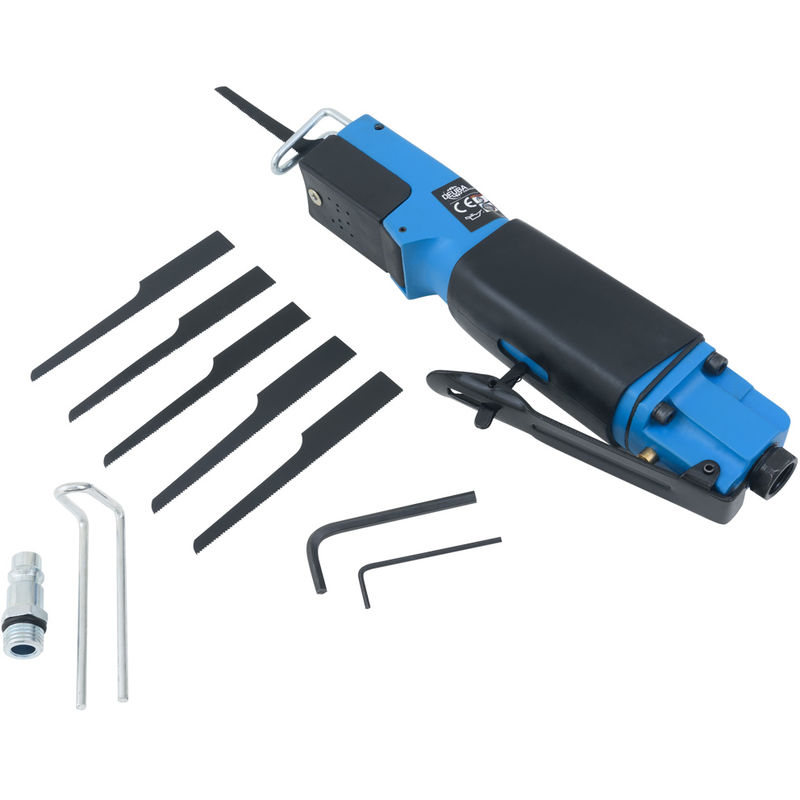Air Saws
Air saws, also known as air saw tools, represent a significant advancement in cutting technology. These powerful tools are driven by compressed air, making them an efficient choice for precise and rapid cutting tasks. Unlike traditional electric or battery-powered saws, air saws offer a unique combination of power, precision, and portability. They are particularly popular in automotive and construction industries, where they are used for cutting through various materials like metal, plastic, and wood with ease. The design of an air saw tool typically features a compact and ergonomic body, making it comfortable to handle for extended periods. This aspect is crucial in professional settings where user fatigue can impact productivity. Brands like Sealey are known for their high-quality air saws, offering models that emphasise durability and performance. With an air saw, users can expect cleaner cuts and a reduced risk of material warping, thanks to the saw's high-speed operation and minimal heat generation. Furthermore, air saws are remarkably versatile. They come with a range of blade options, allowing users to tailor the tool to specific materials and cutting requirements. This adaptability makes them a valuable addition to any toolkit. Whether tackling intricate shapes or straight cuts, an air saw delivers with precision and speed, transforming how cutting tasks are approached.










What you need to know before you buy an air saw?
When choosing an air saw, a specialised tool designed for cutting through a variety of materials, it's crucial to pick one that suits your specific project needs. Air saws are a favourite in automotive, construction, and fabrication industries for their precision, versatility, and ease of use in cutting tasks.
An air saw tool is particularly effective in making intricate cuts and shapes in materials like sheet metal, plastics, and fibreglass. Its ability to navigate tight spaces and make clean, precise cuts makes it a valuable tool for detailed work, such as bodywork in automotive repair or intricate cutting in carpentry.
Incorporating an air saw into an air tool kit enhances the toolkit's overall versatility. An air tool kit typically includes a range of tools for various applications, and the inclusion of an air saw adds significant value, especially for tasks requiring detailed cutting work.
When choosing an air saw, key considerations include the saw's cutting capacity (the types and thicknesses of materials it can cut), the strokes per minute (which affects the speed and smoothness of cuts), and the ergonomics of the tool, including its weight and grip comfort. Additionally, the compatibility of the air saw with different types of blades and your existing air compressor setup is important for ensuring optimal performance.
In summary, selecting an air saw involves considering factors like the tool’s cutting capacity, speed, ergonomics, and compatibility with various blades. While air saws are tailored for precise and intricate cutting tasks, incorporating them into an air tool kit further expands the range of applications, making them a valuable addition to any professional or DIY toolkit.